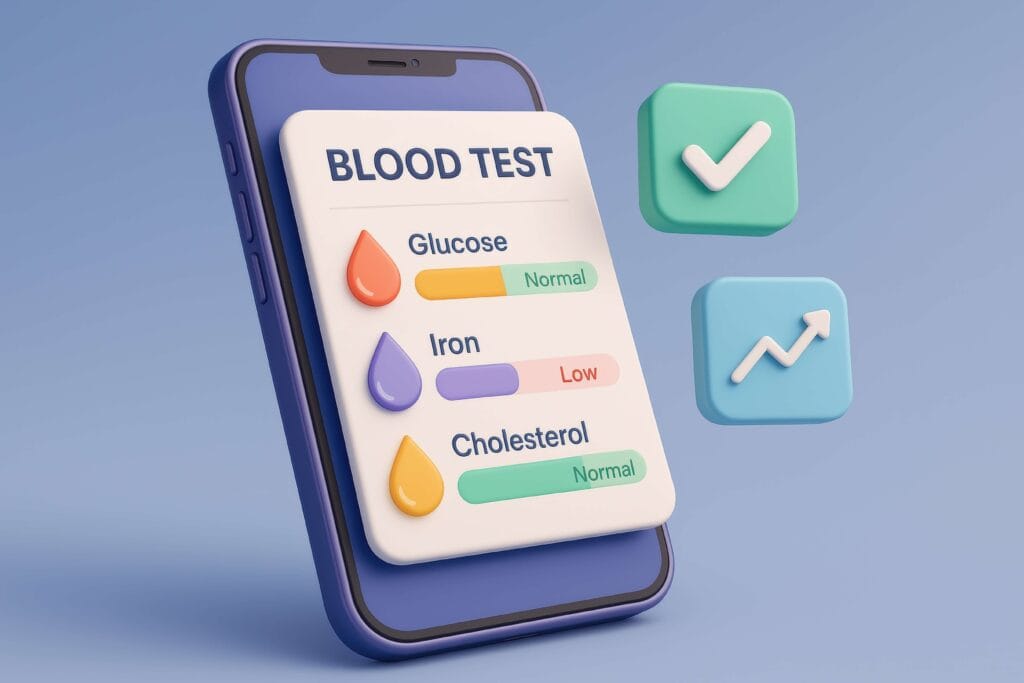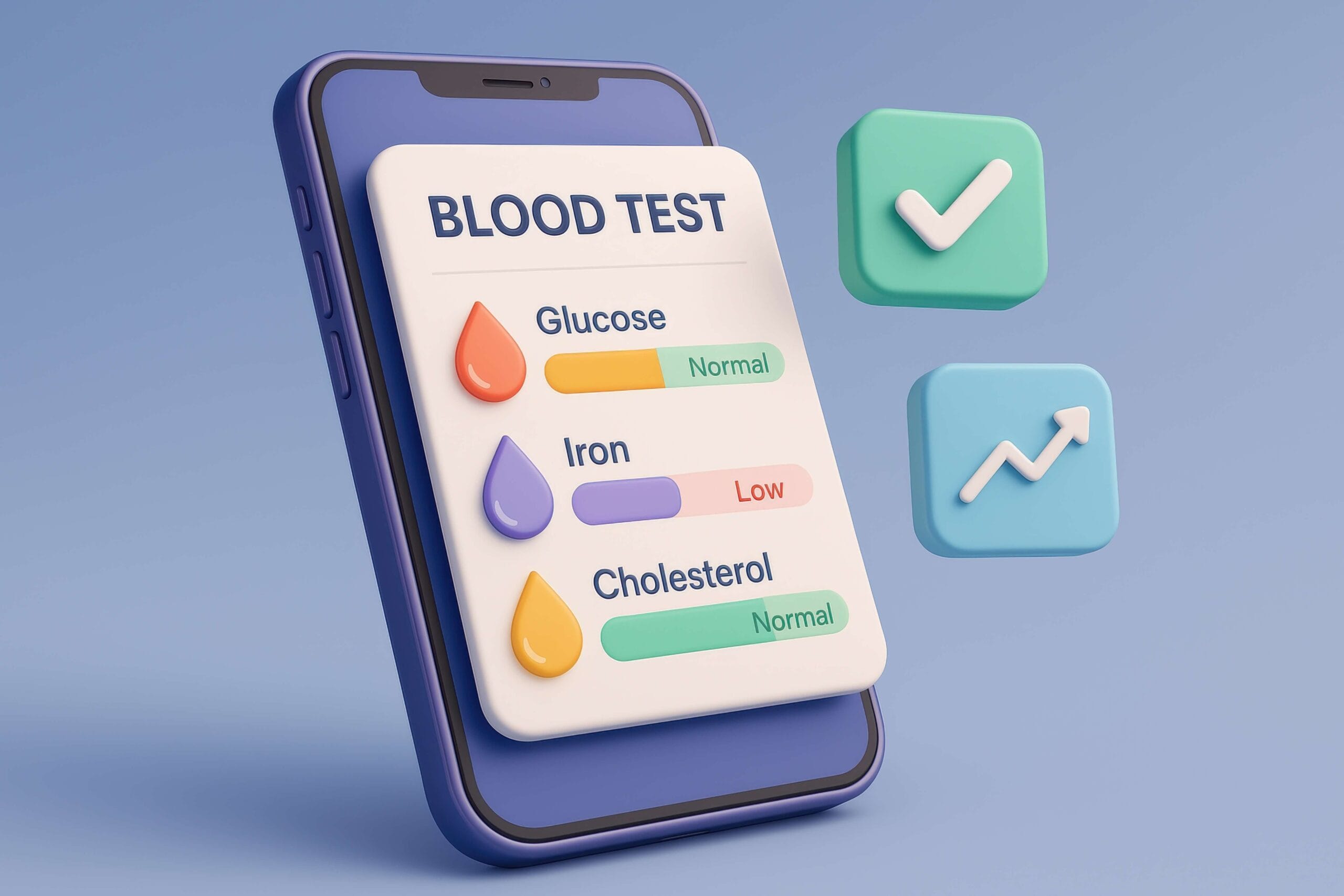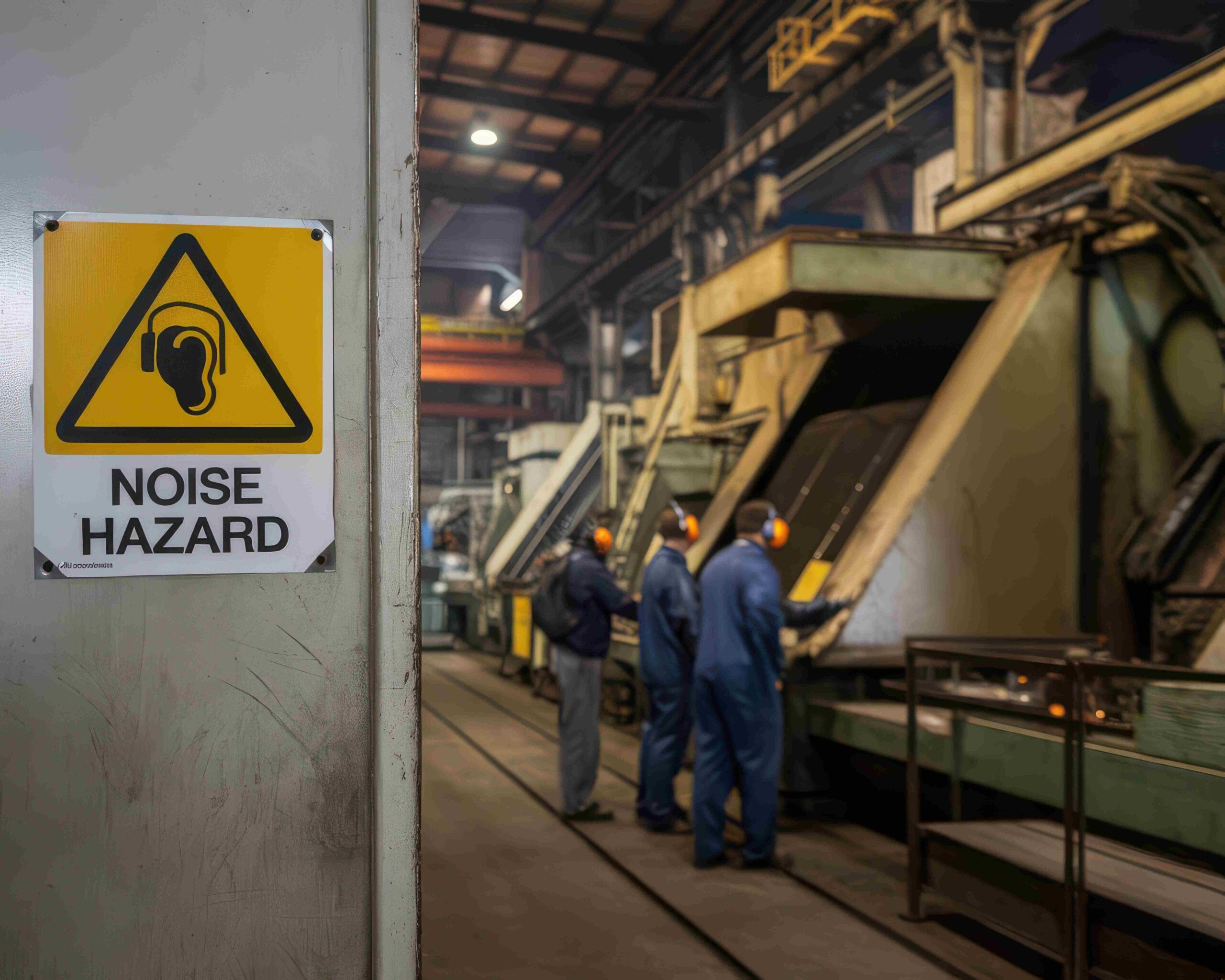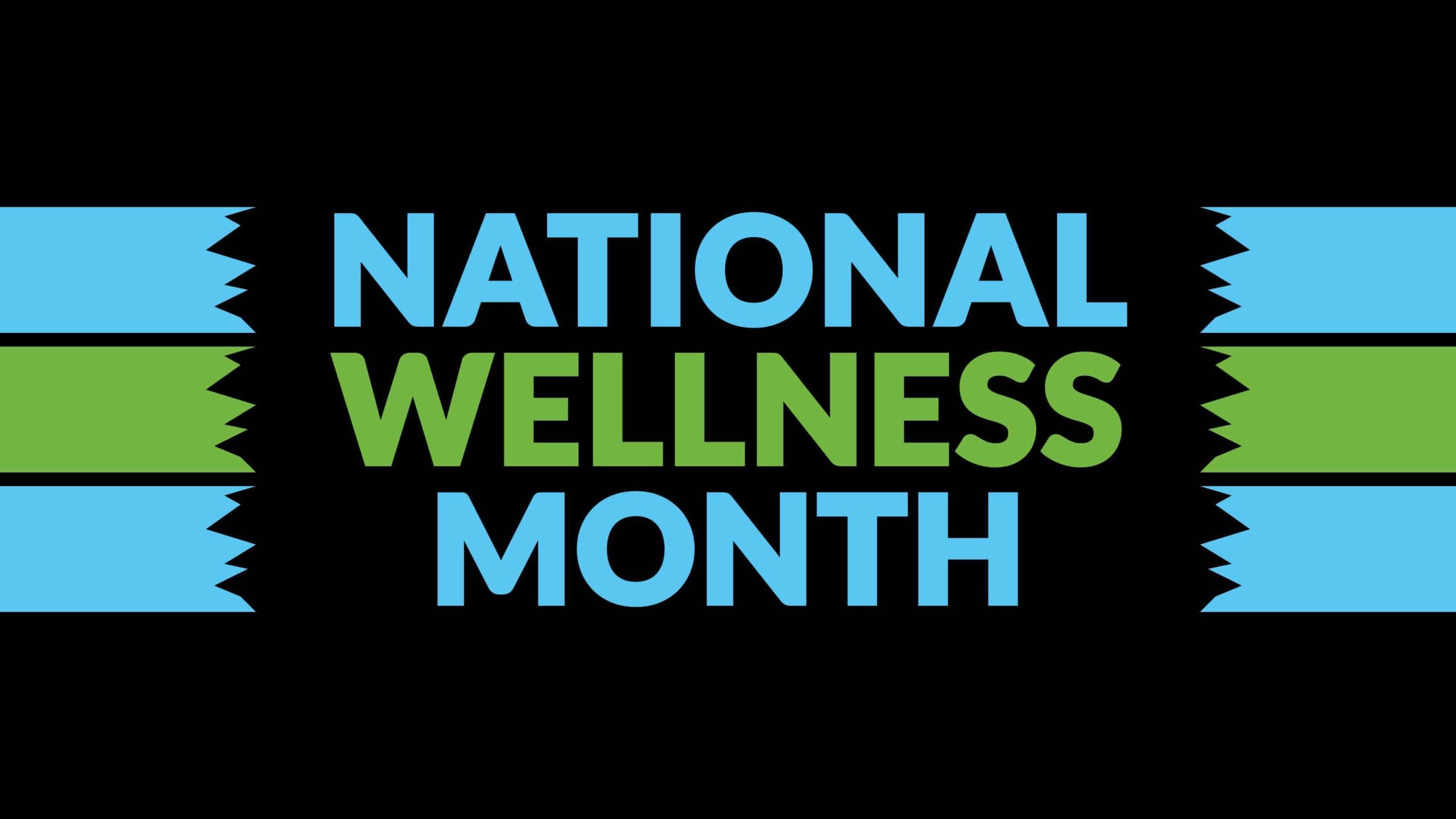Cholesterol and glucose monitoring are most recommended since high cholesterol and raised blood sugar are among the most serious health risks in the UK, even though they often go unnoticed. These conditions usually develop without obvious symptoms, but they are major causes of heart disease, stroke, and type 2 diabetes. These illnesses cost the NHS billions every year and result in many days of missed work.
Early identification of these risks enables effective management and control. Blood tests can detect warning signs prior to the onset of severe complications, allowing individuals to implement lifestyle modifications and seek appropriate medical intervention.
For employers, checking cholesterol and glucose is more than a routine health check. It helps protect productivity, reduces absences, and demonstrates genuine care for employee well-being. At Healthscreen UK, we now offer this service as part of our occupational health support, helping businesses build healthier and stronger teams.
What is Cholesterol?
Cholesterol is a waxy, fat-like substance found in the blood. The liver produces all the cholesterol your body needs, while some also comes from the food you eat. Despite often being described as “bad,” cholesterol is actually essential for building healthy cells and producing hormones. The problem begins when cholesterol levels become unbalanced. When there is too much of the wrong type, it can silently damage arteries, raising the risk of heart disease and stroke.

Types of Cholesterol
When we talk about cholesterol, there are two main types you should know about:
- Low-Density Lipoprotein (LDL) Cholesterol: Often referred to as “bad cholesterol.” High levels of LDL can lead to fatty build-ups in arteries, restricting blood flow and increasing the chance of heart attacks or strokes. Because this builds up on artery walls, forming a hard deposit called plaque, narrowing the arteries and increasing the chances of a heart attack or stroke.
- High-Density Lipoprotein (HDL) Cholesterol: Commonly known as “good cholesterol.” HDL works to remove additional cholesterol from the bloodstream; this is transported to the liver, where it can be broken down. Though high levels of HDL can lower your risk for heart disease and stroke.
- Non-HDL Cholesterol: All the “bad” types of cholesterol are included in this, like LDL and very low-density lipoprotein (VLDL). This is considered a more comprehensive measure of harmful cholesterol levels than just LDL alone.
- Triglycerides: These are not actually cholesterol but another form of fat in the blood that is measured as part of a cholesterol test. If these are found in high levels combined with high LDL or low HDL, then it can increase the risk of heart disease.
Normal Cholesterol Levels
For most adults, healthy cholesterol levels [UK guidelines (mmol/L)] should be:
- Total cholesterol: 5 mmol/L or less
- Non-HDL cholesterol (bad cholesterol): 4 mmol/L or less
- HDL cholesterol (good cholesterol): 1 mmol/L or more for men, 1.2 mmol/L or more for women
- Triglycerides (fasting): 1.7 mmol/L or less
These numbers serve as a useful guide, but the optimal levels for each person can vary depending on factors such as age, medical history, and lifestyle.
Why Cholesterol Monitoring Matters
High cholesterol usually does not cause any symptoms. Often, people only find out they have high cholesterol after a heart attack or another health problem. Regular cholesterol checks help you spot issues early and take steps before they become serious.
Our cholesterol monitoring is part of our occupational health services. We offer simple blood tests and private advice, helping both employers and employees lower the hidden risks of heart disease and look after long-term health.
What is Glucose?
Glucose or blood sugar serves as the main energy source for the human body, supporting essential functions such as cognition and muscle activity. It is primarily derived from dietary carbohydrates, which are metabolised and transported into the bloodstream. Insulin, a hormone, facilitates the uptake of glucose into cells for energy production. During periods of fasting, such as overnight, the liver synthesises glucose by breaking down glycogen stores through a process known as glycogenolysis.
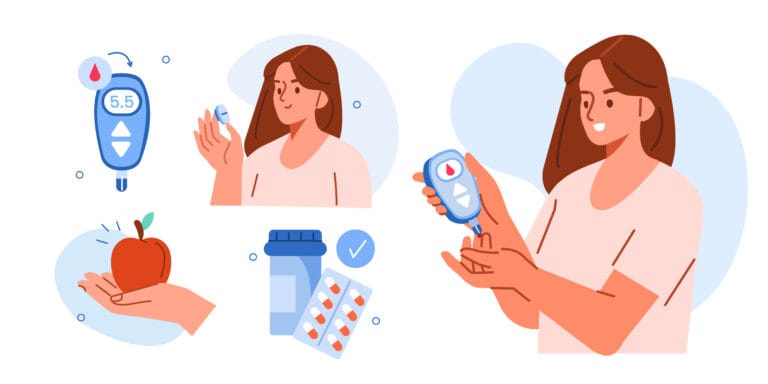
Why Glucose Matters
Glucose is essential as it provides energy to all cells, tissues, and organs. Maintaining balanced glucose levels is critical for physiological function. Both hyperglycaemia and hypoglycaemia can result in significant health complications.
- High Glucose (Hyperglycaemia): Often linked to pre-diabetes and type 2 diabetes, and high glucose levels can cause long-term damage to blood vessels, nerves, kidneys, and eyes.
- Low Glucose (Hypoglycaemia): Although less common in routine workplace checks, low glucose can cause dizziness, confusion, and fainting in individuals.
In the UK, blood sugar levels are measured in millimoles per litre (mmol/L). There are specific ranges for both healthy individuals and people with diabetes. For most healthy adults, a normal fasting blood glucose level is between 4.0 to 5.9 mmol/L and 2 hours after eating is less than 7.8 mmol/L. For adults with Type 1 Diabetes and Type 2 Diabetes, the fasting range is 4 to 7 mmol/L, while the postprandial range is 5 to 9 mmol/L and 8.5 mmol/L and below, respectively.
Why Glucose Monitoring Is Important
High blood sugar often goes unnoticed because there are no early symptoms. Many people have pre-diabetes without knowing it, which raises their risk of diabetes, heart disease, and stroke. Regular checks help employees understand their health and take action early.
Glucose monitoring is provided alongside cholesterol testing using rapid, minimally invasive blood tests. Clinicians deliver clear results and confidential guidance about the interpretation of these findings.
Knowing their blood sugar levels gives employees peace of mind, and employers benefit from a healthier, more engaged team. Together, cholesterol and glucose checks are a key part of a proactive approach to workplace health.
The Risks of High Cholesterol and Raised Glucose
Cholesterol and glucose are both essential for the body to function properly, but high levels can be detrimental. The real risk is that these problems often develop quietly. Many people feel fine even as their arteries narrow or their blood sugar rises, which can lead to serious health issues.
Risks of High Cholesterol
When LDL (“bad”) cholesterol builds up in the bloodstream, the fatty deposits, as mentioned earlier, form along artery walls. This process, known as atherosclerosis, restricts blood flow, forcing the heart to work harder. Over time, it can lead to:
- Heart Disease, one of the UK’s biggest killers, is often triggered by blocked arteries.
- A stroke occurs when a reduced or blocked blood supply to the brain affects it.
- Peripheral Artery Disease (PAD) is characterised by the narrowing of arteries in the legs, resulting in pain and mobility issues.
Risks of Raised Glucose
Blood sugar that remains high over time is one of the clearest signs of pre-diabetes or type 2 diabetes. Uncontrolled, this can cause lasting damage across the body:
- Nerve Damage (Neuropathy): Tingling, numbness, and pain in hands and feet.
- Kidney Disease (Nephropathy): Potential kidney failure requiring dialysis.
- Eye Problems (Retinopathy): Vision loss and blindness if left untreated.
- Cardiovascular Risk: Diabetes greatly increases the risk of heart disease and stroke.
The Workplace Impact
For employers, the risks go far beyond individual health concerns. High cholesterol and raised glucose contribute to:
- Increased sickness absence and long-term leave
- Reduced concentration and productivity
- Higher insurance and healthcare costs
- Lower staff morale and retention
That is why regular cholesterol and glucose checks at work are so important. Early detection lets employees act before health problems get worse, and helps employers build a stronger, healthier team. Our services make these checks easy and accessible, helping businesses look after their staff, cut down on absences, and meet their duty of care.
How Cholesterol and Glucose Monitoring Works
Cholesterol and glucose checks are simple, quick, and accurate, but their impact on long-term health can be huge. We’ve made our monitoring services easy to fit into the workday, so employees aren’t disrupted, and employers get the most benefit.
Step 1: The Blood Test
- Cholesterol Test: A small blood sample is taken, typically from a finger prick or venous draw. This measures total cholesterol, LDL (“bad” cholesterol), HDL (“good” cholesterol), and triglycerides if required.
- Glucose Test: A similar sample is used to check current blood sugar levels. In some cases, fasting may be recommended for the most accurate results, though non-fasting checks are also valuable.
Step 2: Immediate, Accurate Results
Our team uses approved equipment to give fast results. This means employees get immediate feedback and know where they stand with their health, without having to wait.
Step 3: Confidential Feedback
Every individual receives their results confidentially. Our clinicians explain what the numbers mean in plain language, covering:
- Whether cholesterol or glucose levels are within the healthy range
- Potential warning signs of raised risk
- Guidance on lifestyle changes or next steps
Step 4: Recommendations and Support
If necessary, we recommend that employees consult their GP for further tests or treatment. For many people, these checks serve as a wake-up call, encouraging them to eat better, exercise more, or seek medical advice sooner than they might have otherwise.
Why Our Approach is Different
- Accurate Testing: Our expert team come to your workplace, reducing time away from duties. Or you can visit our clinics.
- Qualified Clinicians: Trained occupational health professionals conduct all tests.
- Tailored Packages: Services can be combined with other checks, such as lung function or audiometry, for a complete health surveillance programme.
Easy cholesterol and glucose checks help both employees and employers take steps to improve long-term health.
Benefits for Employers
Investing in preventive health check-ups. When it comes to workplace wellbeing, it’s better to invest in health checks before problems start. Cholesterol and glucose monitoring protects employees and brings real benefits for employers too.
1. Reduced Absence and Long-Term Sickness
High cholesterol and raised glucose are major contributors to heart disease, stroke, and type 2 diabetes, all of which can lead to extended time away from work. By detecting risks early, businesses can help staff manage their health before it develops into a more serious issue, thereby reducing costly absenteeism and improving overall well-being.
2. Increased Productivity
Employees who understand their health status are often more motivated to make positive changes in their health. This leads to higher energy levels, improved focus, and better performance at work. A healthier workforce is a more productive one.
3. Lower Costs
Regular health checks are more cost-effective than dealing with illness later. They can result in fewer hospital visits, reduced sick leave, and lower insurance costs, all of which help the business save money.
4. Stronger Workplace Culture
When employees see their employer taking care of their health, it fosters trust and loyalty. This can help keep staff, lift morale, and make your organisation a better place to work.
5. Duty of Care and Compliance
UK employers have a legal and moral duty to look after their staff. Offering cholesterol and glucose checks proves a genuine commitment to health and safety and helps create a supportive work environment.
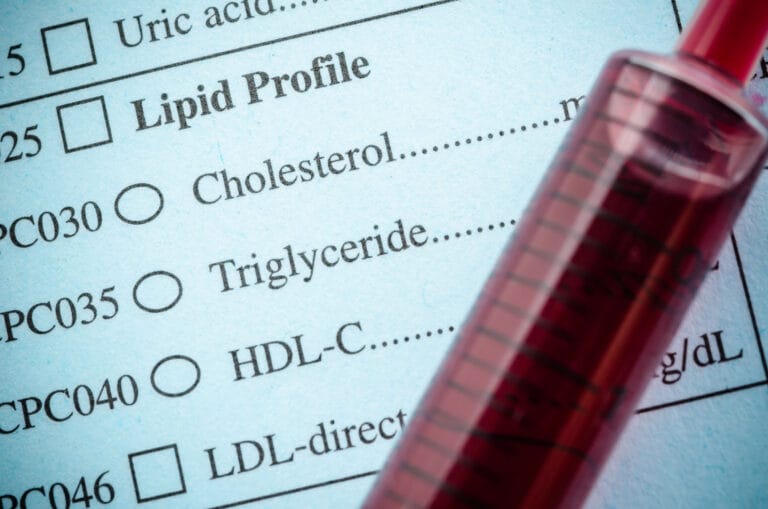
Benefits for Employees
For employees, cholesterol and glucose checks can make a real difference. These quick and simple tests offer peace of mind, show any risks, and encourage healthier choices for the future.
1. Early Detection of Hidden Risks
High cholesterol and raised glucose often go unnoticed until they cause serious complications. Regular checks provide employees with the opportunity to identify potential issues early and take action before they escalate into life-threatening conditions.
2. Peace of Mind
Knowing your cholesterol and blood sugar levels gives you peace of mind. Employees can stop worrying about what they don’t know and feel confident about their health. This is especially important for anyone with a family history of heart disease or diabetes.
3. Personalised Advice
At Healthscreen UK, our trained clinicians explain results clearly and privately. Employees get simple advice that fits their needs, whether that means changing their diet, exercising more, or getting a referral for further care.
4. Improved Health and Energy
Making positive lifestyle changes because of monitoring can lead to improved fitness, enhanced concentration, and increased energy levels. This not only benefits employees at work but also in their personal lives.
5. Greater Control Over Long-Term Health
Cholesterol and glucose monitoring enables individuals to manage their health proactively. Understanding these metrics facilitates progress tracking, sustained motivation, and the adoption of habits that lower future disease risk.
6. A Supportive Work Environment
When an employer offers regular health checks, it shows genuine care for staff’s well-being. This also makes employees feel valued, respected, and supported, which in turn strengthens the workplace culture and enhances overall morale.
Lifestyle Factors That Influence Results
While cholesterol and glucose levels can be influenced by genetics and age, everyday lifestyle choices play the biggest role. The good news is that even small adjustments can make a noticeable difference. Regular monitoring through Healthscreen UK provides employees with a clear starting point; however, lasting improvements come from the choices made on a day-to-day basis.

Diet and Nutrition
What you eat directly affects both cholesterol and blood glucose levels.
- Reduce Saturated and Trans Fats: Found in fried foods, processed snacks, and fatty meats, these types of fats can raise LDL cholesterol levels.
- Choose Healthy Fats: Opt for nuts, seeds, olive oil, and oily fish to help boost HDL cholesterol levels.
- Increase Fibre Intake: Whole grains, beans, fruit, and vegetables help lower cholesterol and stabilise blood sugar.
- Limit Sugar and Refined Carbs: Consuming sugary drinks, white bread, and sweets can cause spikes in blood glucose levels.
Exercise and Physical Activity
Frequent movement and exercise help the body regulate both cholesterol and glucose levels more effectively.
- Aim for at least 150 minutes of moderate activity per week (e.g., brisk walking, cycling).
- Include strength training twice a week to improve metabolism and cardiovascular health.
- Even short breaks from sitting at work can help stabilise blood sugar.
Weight Management
Carrying extra weight is closely linked to higher cholesterol and blood sugar. Losing just 5 to 10 per cent of body weight can significantly lower health risks. Workplace checks can motivate employees to keep up healthy habits.
Stress and Sleep
Ongoing stress and poor sleep can impact the hormones that regulate cholesterol and blood sugar levels. Encouraging better sleep and stress-busting habits, like mindfulness or walking, can really help.
Smoking and Alcohol
- Smoking: Damages blood vessels and lowers HDL cholesterol. Quitting is one of the fastest ways to improve cardiovascular health.
- Alcohol: Drinking too much can raise triglycerides and blood sugar, so it’s important to drink in moderation.
Cholesterol and Glucose Monitoring
You can’t see cholesterol and blood sugar every day, but if they’re not checked, they can cause serious problems. Early detection really does save lives. A quick test can reveal risks that, if left alone, might lead to heart disease, stroke, or diabetes; conditions that affect both people and workplaces.
Cholesterol and glucose checks help employers build healthier, stronger teams. Employees gain peace of mind, receive personal advice, and have opportunities to make positive changes, while organisations experience reduced absence, improved productivity, and a stronger workplace culture. Better health starts with awareness. By offering these checks, we help manage health risks and support a more proactive, healthier workforce.
Take the first step today. Book cholesterol and glucose checks with us to help protect your team’s health for the future.
FAQs
1. How does cholesterol affect blood sugar?
Cholesterol and blood sugar are closely linked. High cholesterol, especially raised LDL (“bad cholesterol”), can make the body less responsive to insulin. This means glucose is not used as effectively, leading to higher blood sugar levels over time.
2. How does high blood sugar affect cholesterol?
When blood sugar levels remain high, it can lower HDL (“good cholesterol”) and increase triglycerides. This combination increases the risk of heart disease because it allows fatty deposits to build up more easily in the arteries.
3. What causes high cholesterol?
High cholesterol can be caused by several factors, including a diet high in saturated and trans fats, lack of exercise, obesity, smoking, excessive alcohol intake, and genetics. Even people who lead a healthy lifestyle may inherit a tendency towards elevated cholesterol levels.
4. What does high glucose mean if not diabetic?
High glucose levels do not always indicate the presence of diabetes. It may be a temporary result of stress, illness, or certain medications. However, consistently raised glucose levels can be an early sign of pre-diabetes, so monitoring is essential.
5. Is type 2 diabetes reversible?
While there is no outright cure, type 2 diabetes can often be managed and, in some cases, put into remission through weight loss, dietary changes, regular exercise, and medical support. The earlier glucose levels are detected, the better the chances of preventing or reversing the condition.


